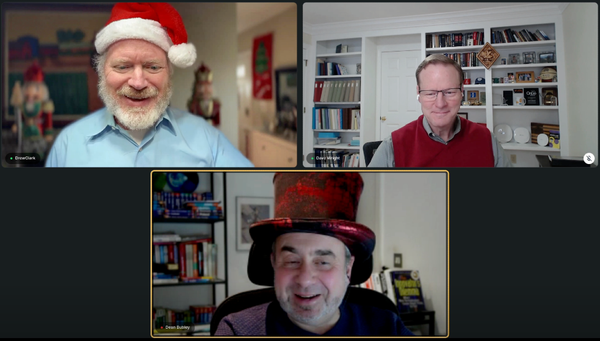Onlight Aurora, Most Advanced Illinois Gigabit Communities Awardee, Shows How to Leverage Its Fiber Network
AURORA, ILLINOIS, November 5, 2013 – Just over a year ago, Illinois Gov. Pat Quinn announced the first of four awards under the state’s “Gigabit Communities Challenge,” an effort to raise the bar on broadband speeds in the nation’s heartland. Of the four awardees named thus far, the Gigabit Network
AURORA, ILLINOIS, November 5, 2013 – Just over a year ago, Illinois Gov. Pat Quinn announced the first of four awards under the state’s “Gigabit Communities Challenge,” an effort to raise the bar on broadband speeds in the nation’s heartland.
Of the four awardees named thus far, the Gigabit Network created by Onlight Aurora here is perhaps the most advanced. This is owing to a unique public-private partnership in the state’s second-largest city.
Other awardees in Illinois are Gigabit Squared and the University of Chicago; the City of Evanston and Northwest University; and Frontier Communications, Connect Southern Illinois and Southern Illinois University.
But the example of Onlight Aurora provides an important window into the way Gigabit Networks can help a multiplicity of purposes. These include government cost-savings, traffic solutions, and economic development options for business retention and growth.
On Wednesday, November 6, 2013, Aurora Mayor Tom Weisner will address the state of Onlight Aurora during a panel discussion at the Broadband Communities Conference on “Making Broadband Projects Sustainable: Fostering Economic Growth is Key to Building Robust Revenue Streams.”
Originally a Cost-Saving Measure
“In 2005-2006, we came to the conclusion that we were paying $500,000 a year [to telecommunications providers] for leased line expenses,” said Peter Lynch, Director and President of Onlight Aurora.
The city proposed to build a city-owned fiber-optic network, at a cost of $7.5 million, he said. At the time, the city was forecasting a minimum of 10 years payback period.
Instead, the city has leveraged:
- A $13 million grant under the Federal Highway Administration’s Congestion Mitigation and Air Quality Improvement Program
- An additional $1 million in funding under Gov. Quinn’s Gigabit Communities Challenge
- Increasing opportunities for business revenue through add-on services available to business users.
“I can joyfully say, that we are now paying that off for its third or fourth time,” said Lynch.
Alleviating Traffic Congestion
The traffic congestion grant, which was administered through the Chicago Metropolitan Area for Planning, is a great example of leveraging a network originally designed for city communications for another purpose entirely.
The traffic grant occurred because the city had the foresight to install large number of fiber strands into conduits that it laid to build out the city network, said Lynch.
That in turn opened an opportunity when the FHA was seeking pilot cities to design programs that would alleviate auto emissions. The means for reduced emissions was to be an enhanced traffic flow because of better traffic light synchronization.
By granting the city’s traffic engineers with “access to several strands of fiber, they were able to prove out their concept on a much bigger scale,” said Ted Beck, the city’s Chief Technology Officer. “That helps the quality of our community.”
“We have been able to see better movement of traffic, which alleviates congestion and air quality,” said Eric Gallt, the city’s Traffic Engineer. The fiber loop enables city traffic officials “to see what is going on remotely, and it decreased the cost of the project by 50 percent or more.”
Planning for Broadband Success
Later, when Gov. Quinn announced the Illinois Gigabit Communities Challenge in the February 2012 State of the State address, the city of Aurora was ready to take the challenge to the next step.
Quinn’s challenge grant offered private providers and communities the opportunity to obtain between $1 million and $4 million in funding by working together to promote the highest-speed connectivity available. The goal was to “unleash the savvy of our entrepreneurs, the brainpower of our academics, and the creativity of our innovators,” Governor Quinn said in the speech.
In Aurora, Lynch and Beck recounted, Mayor Weisner empaneled a broadband roundtable, from business and the government, to brainstorm how the city’s fiber-optic network could benefit community broadband centers like schools, hospitals, and libraries. The plan enables these institutions to link up to the fiber network as they contribute to its financial strength.
“Technology plays a huge part in retaining the businesses that you want to keep and targeting the companies that you want to recruit,” said Beck. “Our core vision was community-based. Our schools are in critical need of technology, but you have to have a model that is sustainable.”
Onlight Aurora’s next step is to move beyond education, health care and social services to significant commercial resale of ultra-high-speed broadband services.
To hear more about Onlight Aurora, visit the session at Broadband Communities Conference at 3:50 p.m. on Wednesday, November 6:
The fiber will last 30 years, but will the network? In this session, our panel of experts will examine key economic-development-driven steps that communities can take to enhance revenues, control costs, and make their networks sustainable.
Leader: Drew Clark – Chairman and Publisher,Broadband Breakfast
Speakers:
Eric Frederick – Executive Director, Connect Michigan
John Honker – President, Magellan Advisors
Bernadine Joselyn – Director, Public Policy & Engagement, Blandin Foundation
Tom Weisner – Mayor, Aurora, Illinois









Member discussion